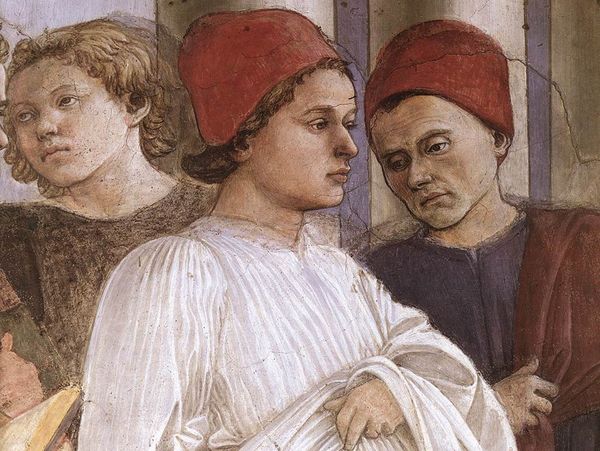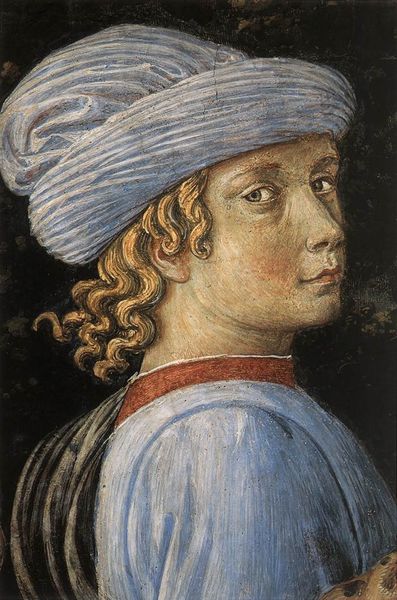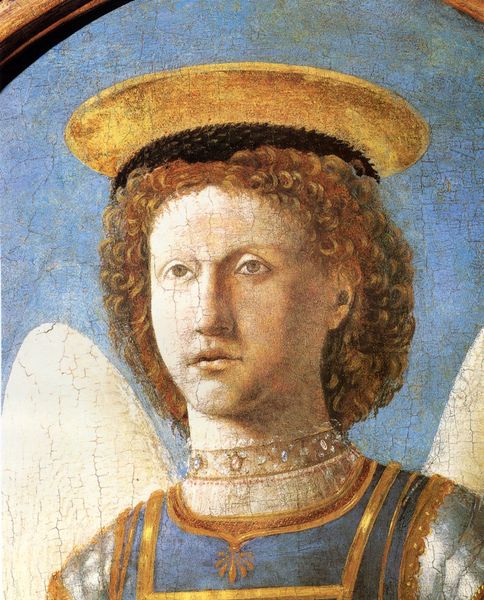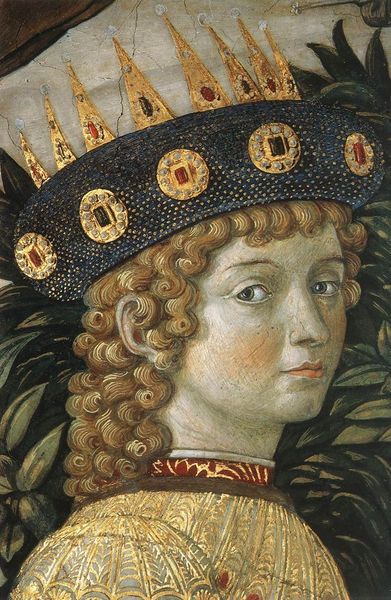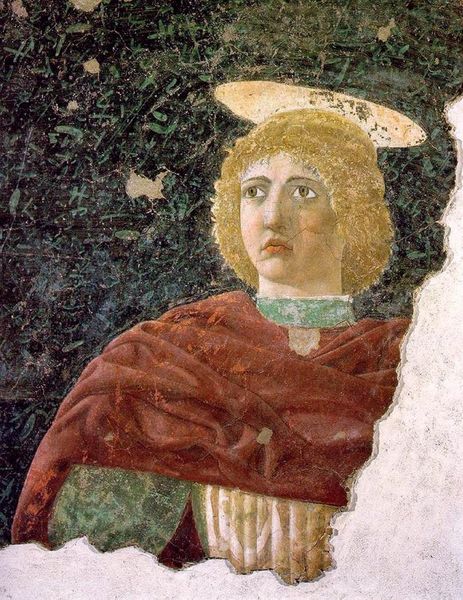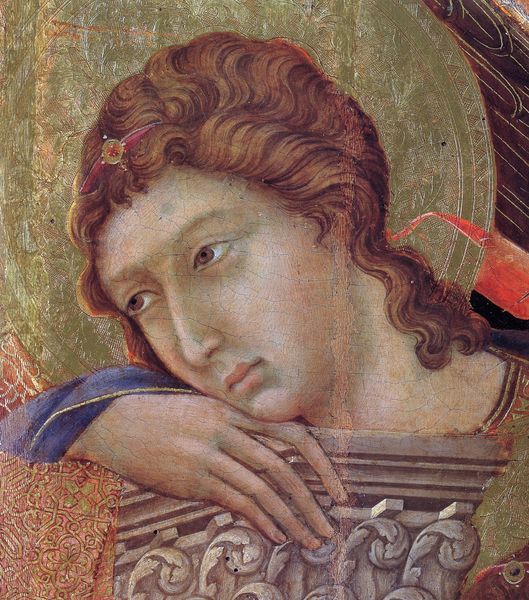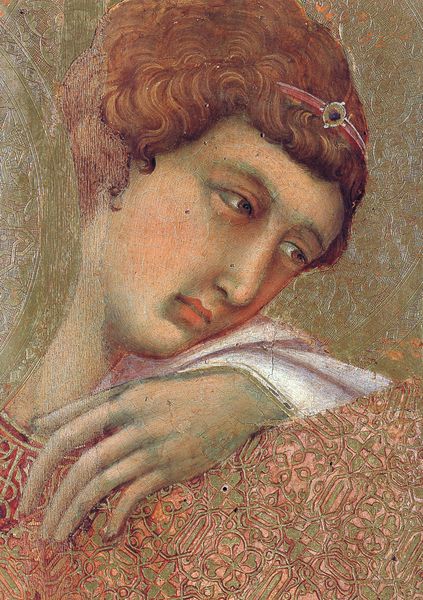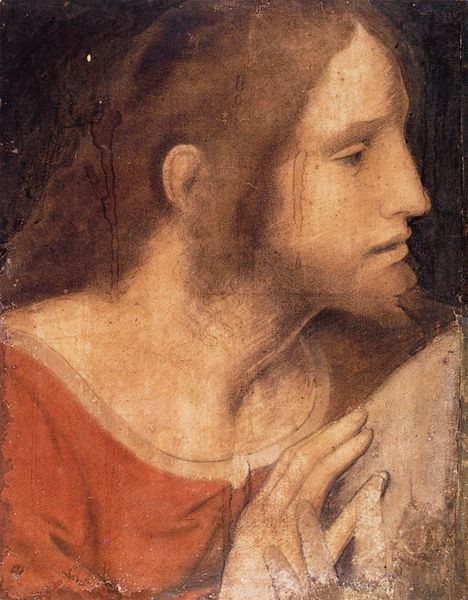
painting, fresco
#
portrait
#
painting
#
figuration
#
fresco
#
oil painting
#
italian-renaissance
Copyright: Public domain
Benozzo Gozzoli made this fresco in the mid-fifteenth century, using the traditional method of applying pigment to wet plaster. The Procession of the Magus Balthazar displays a refined understanding of material and craft, combined with a deep understanding of design. Gozzoli had to work quickly, layering colours while the plaster was still damp. The artist prepared by making detailed drawings for the composition, and used natural pigments mixed with water to create a range of hues, from the subtle flesh tones to the vibrant reds and greens of the clothing. There were workshops that made the pigments, plaster, and specialized tools that were needed. The social significance of fresco painting lies in its location: commissioned by wealthy families, these murals served as both decoration and a display of power. The artist and his team laboured tirelessly to produce these frescoes. By understanding the materials, methods, and context, we can fully appreciate this artwork and challenge traditional notions of art and craft.
Comments
No comments
Be the first to comment and join the conversation on the ultimate creative platform.
